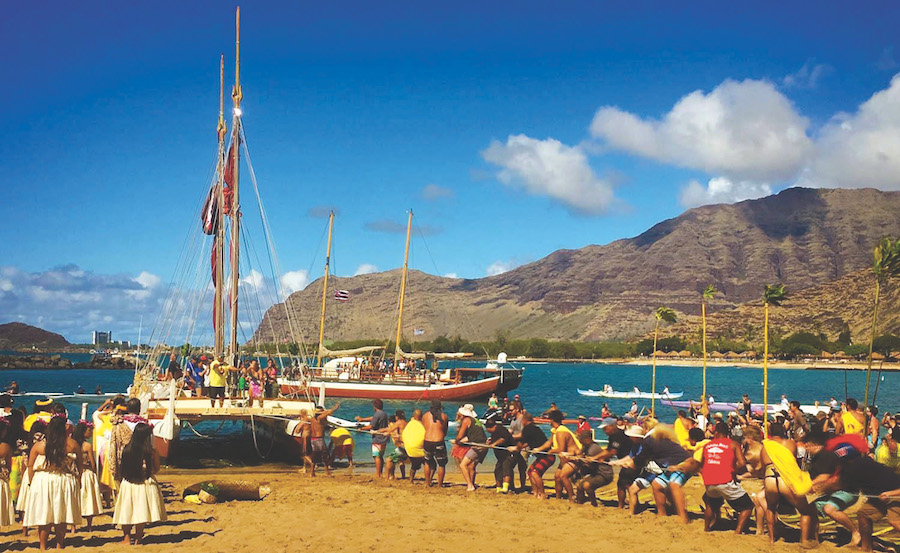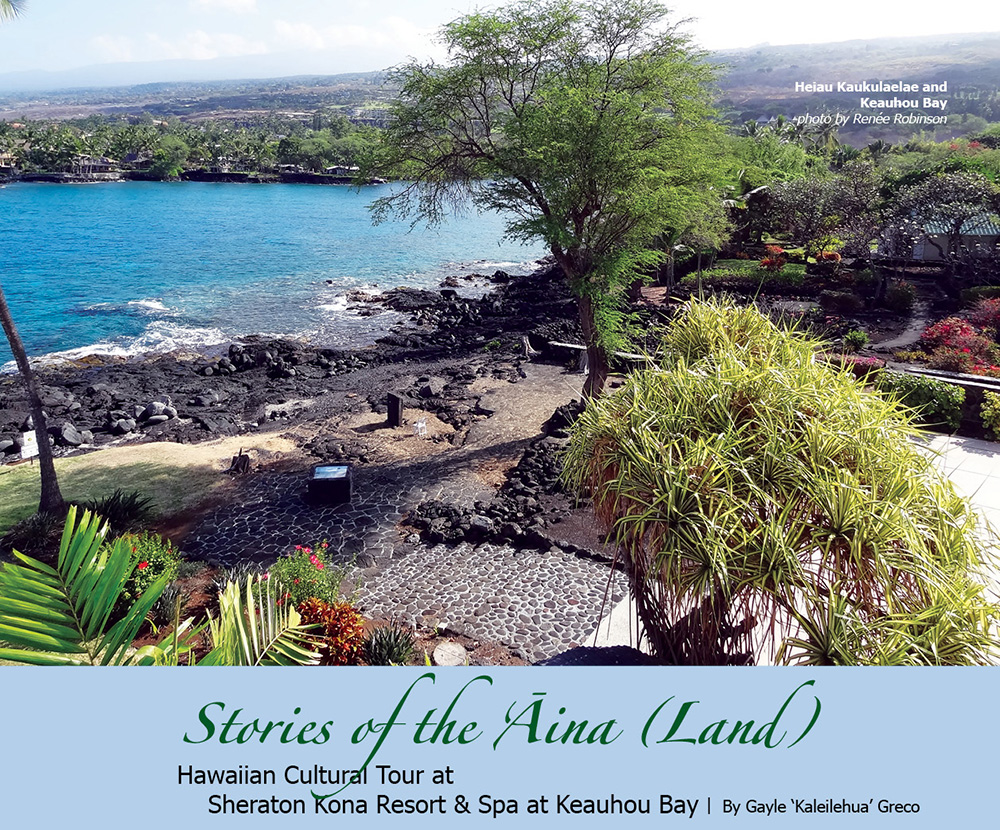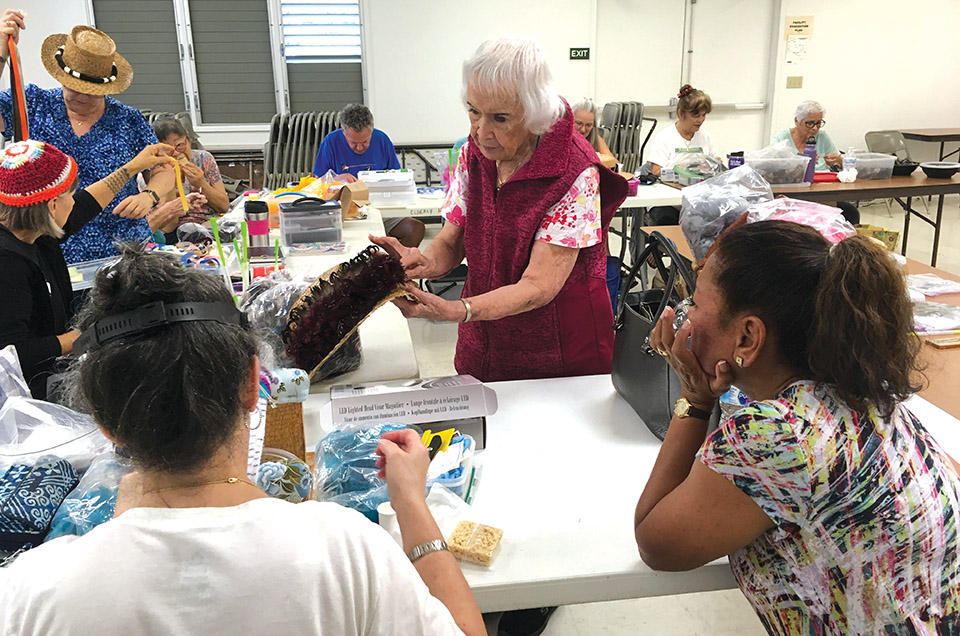Kūpuna Talk Story: Clayton Bertelmann, 1946–2004

By Keith Nealy
As a filmmaker and a storyteller I have been blessed with the gift of sharing the mana‘o of more than 60 of Hawai‘i’s most revered kūpuna in spirited conversation exploring the cultural legacy they carry in their memory. Each conversation has been a journey back in time into the world they inhabited, through their eyes and expressed in their words.
Clay Norman Bertelmann was a paniolo from Waimea—as tough as they come. Although he spent many years working for Parker Ranch, he also had a deep love for his family, for the sea and was an avid fisherman, diver, and safety waterman on Hollywood films such as Waterworld.
From 1965-68 he served in the war in Vietnam, which began to change his perspective of the world, and those years would change his life forever. A few years after Clay came back, Hawai‘i began to experience a cultural renaissance led by Herb Kāne and a few others who had a theory about the migration of the Polynesians crossing the Pacific that led to the building of the voyaging canoe Hōkūle‘a.
Clay’s brother’s Shorty and Carl trained on Hōkūle‘a in 1975 and Shorty sailed on the maiden voyage of Hōkūle‘a to Tahiti in 1976. Clay eventually joined the 1985 voyage of Hōkūle‘a and sailed to Tahiti and other islands in Polynesia.
By the 1992 voyage to Rarotonga, Clay had become captain of the Hōkūle‘a. Reaching the pinnacle of captain of the Hōkūle‘a would be enough for most people, though not for Clay.
He and other veteran crew members of Hōkūle‘a, namely Shorty Bertelmann and Tiger Espere, wanted Hawai‘i Island to have its own canoe. In 1994 Clay had a vision and decided to build a canoe. He and the others asked the community for help—and they responded.

Makali‘i was launched on Feb 4, 1995 and Clay captained her maiden voyage. Shorty, a navigator of Hōkūle‘a joined Makali‘i as navigator and together they guided Makali‘i to Taputapuatea, Ra‘iatea in Tahiti Nui, and Nukuhiva in the Marquesas Islands.
The people of Hawai‘i Island now had their own canoe, and the beginning of the legend of Makali‘i could be entered in the genealogy of voyaging canoes that settled the Pacific.
I first became acquainted with Captain Clay Bertelmann at the premiere of a film I created for Dr. Earl Bakken, The Healing Island. Seated at the next table were a group of serious-looking Hawaiians to whom Clay was obviously holding court. I felt a little intimidated as this was my first Hawaiian cultural production, and I knew that my film and I were going to be judged and scrutinized.
At the end of the film during the applause, this huge mountain of a man with long white hair in a ponytail with sunglasses perched on top looked over at me and nodded with a positive look on his rugged face—as if to say “not bad.” To me, that nod was equal to winning an Academy Award—and I could now breathe again.
Not long after I was summoned to meet with Clay and his ‘ohana wa‘a (canoe family) to discuss making a film about Makali‘i.
The following conversations came from the filming of The Magic of Makali‘i that occurred between 2001-2003.
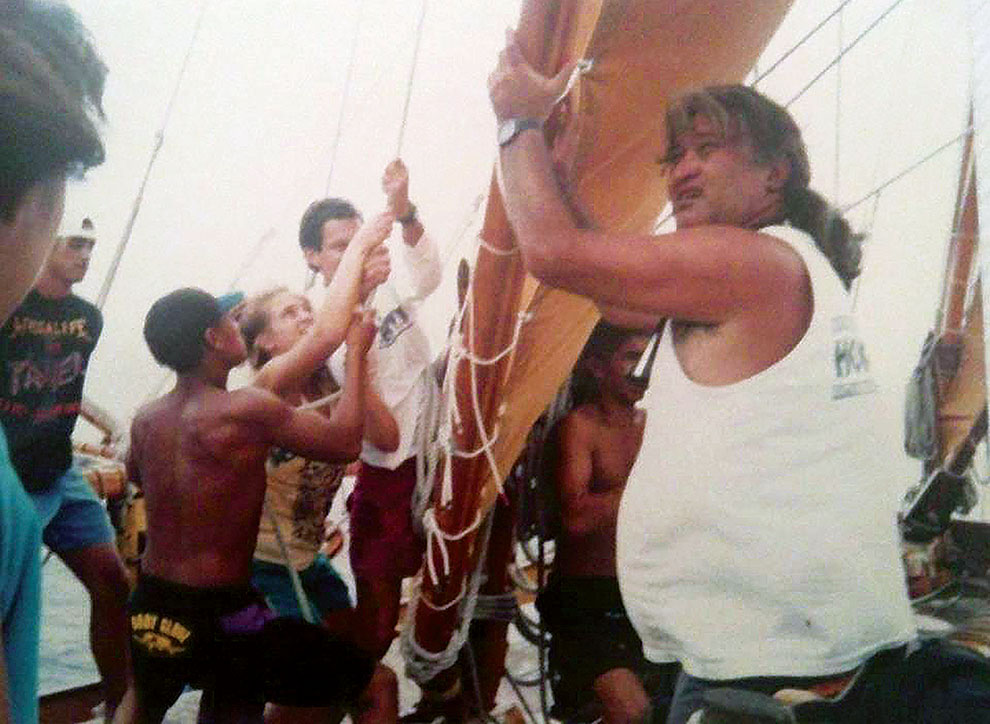
Keith: What were the feelings you were having when you first sailed on Hōkūle‘a?
Clay: The first time I sailed on that canoe, I said this is something that I’ve got to do. Then, to sail with Mau Pialug, the master navigator from Satawal, and being able to learn from him, not only the art of non-instrument navigation, but also the values and principles that surround his teaching ethics, ya? Of why, and how. When to, and when not to. That was so similar to how our culture was prior to contact. That was an awesome feeling, it was something that just charged me, and from then ‘til now that feeling is still strong and is still as intense as it was back then.
Keith: Clay, why is the canoe so important?
Clay: Well, if you look at our history at the time during the migrations, the canoe, or the wa‘a kaulua (double voyaging canoe), was the epitome of the culture—everything surrounded and supported the canoe.
Keith: Tell me about the dream you had about Makali‘i.
Clay: Makali‘i actually started a long time ago in our minds and in our dreams. Through the years we were blessed to be able to sail with Hōkūle‘a and learn from Mau and from the canoe. And research our traditions that gave us the opportunity in 1994 to build a canoe of our own for this island. We knew the Makali‘i would be a teacher to us all—for us to learn and respect the old ways—and to serve the community in many different ways.
Keith: When did you start Na Kalai Wa‘a and the Makali‘i voyaging program?
Clay: Our first program was in 1995 working with “at risk” kids who were having problems, not only in the home, but in school and with drugs. Working with these kids to try to instill more self-esteem and have them understand that it is really important to be proud of who you are and where you are from.
We use the canoe as a tool to bring people to come and reconnect with their past, ya?
No matter if you’re pure Hawaiian or not. Our programs include working with a whole bunch of students, not only Hawaiians but from all other ethnic backgrounds.
The local high schools were our first programs, the launching point for the Makali‘i education programs today.
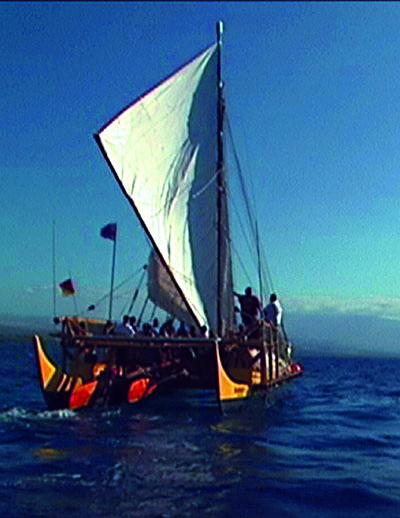
Keith: Have you had students from places other than Hawai‘i?
Clay: Ya, we’ve been fortunate to work with students from Cornell in New York and we have relationships with UC Santa Barbara and many other places.
Our programs are primarily focused on the youth of Hawai‘i, and it makes no difference what nationality they are. It’s about working together to preserve and take care of what we’ve got. Whether it’s physically, spiritually, or one of the biggest things—environmentally. Try to make everything better, that’s the whole focus of what we do.
Keith: Drugs have become a huge problem in our communities. How does your program address that?
Clay: Looking at our young kids in the programs that we run, how many of these kids, their parents, grandparents, brothers, sisters are hooked on some kind of drug. It just devastates the whole community. Not only physically but mentally and also the environment, you know? Violence in the home, drug abuse—as a teenager or as an adult—how do we prevent that?
Keith: Yes, I agree, and what do you see as a solution?
Clay: What I’d like to see are programs that are set up to prevent them from getting into those situations. And that’s where we come in. That’s where we try to help, ya? Creating more awareness, more education. We cannot fix the problem, but to prevent that problem from happening. To me, that’s the only way.
Keith: What about rehab?
Clay: Ya, they need rehab; they need all of that. But before we get to that stage of trying to rehab somebody it’s more important that we try to educate them so they don’t get to that point.
Our focus has always been working with youth and working together as a family to try to make everything better. Meaning, if someone gets screwed up—you gotta try to help them. If the environment gets screwed up—you gotta try and help it. It all works together. Like family, ya? Family takes care of family. Well, this is one big family.
This takes me back to when I was growing up. My family was really close. My family was really tight. My dad was strong. He was a tough man. He really wanted to make sure his family was taken care of. Back in time, same thing. It’s about survival. Take care of what you got—don’t misuse—you’ve got to take care. Now, we talk about canoes, same thing. You get out on the ocean, and the people on the canoe are your family, and you got to take care of those guys. The most important thing is the safety of your crew—or your family and the canoe. Therefore that canoe becomes your island, your little island.
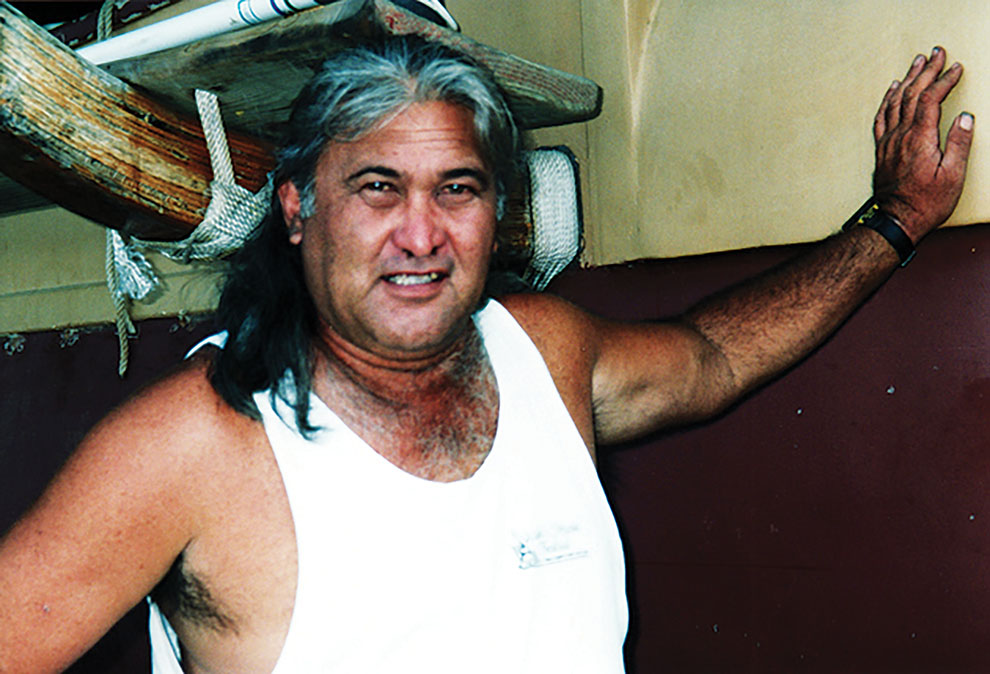 Keith: That reminds me that Herb Kāne once told me the voyagers were known as the ultimate resource managers—always maximizing resources to survive. Mau taught me a saying: “He wa‘a he moku, he moku he wa‘a.” Can you tell me what that means?
Keith: That reminds me that Herb Kāne once told me the voyagers were known as the ultimate resource managers—always maximizing resources to survive. Mau taught me a saying: “He wa‘a he moku, he moku he wa‘a.” Can you tell me what that means?
Clay: It means, “The canoe is our island, and the island is our canoe.”
Mau always said, “When on canoe—think island, and when on island—think canoe.”
It’s a simple philosophy for survival and it has worked for thousands of years.
Keith: The Makali‘i program is such an amazing concept. The kids I have met and sailed with have gone through such amazing transformations from doing drugs and being in gangs to becoming responsible members of the community. How do you feel about your success?
Clay: I know it’s not a dream anymore and I know that collectively we can do something about it and really work to make this place a better place to live. I know the values that our culture is based on can be learned by everybody.
Again, it’s not only about sailing; it’s not about jumping on the ocean and then go sail; it’s about working together, and you know all about that because you’ve been sailing with us for years.
I realized that Clay belonged to the generation of other kūpuna I have been blessed to film (Nona Beamer, Kindy Sproat, Herb Kāne, Kenny Brown, etc.) who came from that so-called shameful era, when, as former mayor Harry Kim told me, “being Hawaiian was not something to be proud of. It was not looked on as being good to be a Hawaiian.”
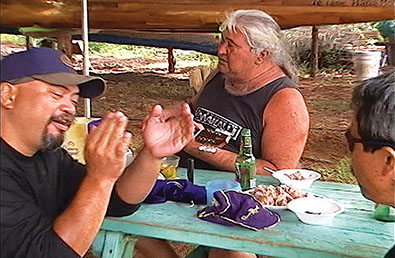
Keith: Aunty Nona [Beamer] once told me she got expelled from Kamehameha School several times for dancing hula and chanting Hawaiian oli. Uncle Kindy told me his parents were told “nevah teach your children Hawaiian, always teach English.” How did you feel about the disrespect of your culture when you were growing up and how do you feel about the culture now?
Clay: I remember when I was growing up it was not good to be Hawaiian. We couldn’t speak our language in school. If you spoke Hawaiian, you’d get slapped!
Today—our culture—we try to live it 24 hours a day. The culture side of what we do is totally important. Again, it goes back to the values. It’s not only about sailing—getting on a double-hull Hawaiian voyaging canoe and go sail. No, it’s a lot bigger than that. It’s about living the old ways.
Keith: How does ancient wayfinding navigation compare with the development of technology in navigating using GPS and computers?
Clay: I remember Mau being very strict telling us when it comes to navigation, “no more paper, no more pencil, everything goes in here [points to head]. Paper get wet. Paper fly away. All your knowledge is lost.”
So the traditions that we try to maintain—and this is very important—are just the way we learned them passed down by our kūpuna.
Keith: I remember Mau laughing when I mentioned using a GPS for navigating. “What if battery die? You lost,” he said smiling.
Clay: For me, technology can be a great thing, and you can learn from both sides, as well. Not only one side… both sides.
Some people talk from here [points to head] and some people talk from here [points to heart]. But if you could do both and feel comfortable about it… to make things better for everybody else… eh, that’s it, ya? So culture to me is the bigger component.
Keith: Clay, your entire life is the canoe. Why is it so important to you?
Clay: For me, the canoe has put me on a good positive path, and through the canoe, or the wa‘a, we’ve been able to help a whole bunch of people. Not only Hawaiians, but people from all different ethnic backgrounds.
We’re just a small piece of this puzzle that are trying to make a difference in lives of people here in Hawai‘i. And maybe not only in Hawai‘i, but all over the place.
We can make a difference by how we run our programs, in getting people or students or whoever to come be a part of these programs so that within themselves they can feel comfortable about who they are.
It’s not only happening here in Hawai‘i, but all over the world.
Again, it goes back to taking care of what you got, and taking care of each other.
We have a unique opportunity here… to do something… collectively by working together. And, all of this is what we try to do to make Hawai‘i—and maybe the world—a better place.
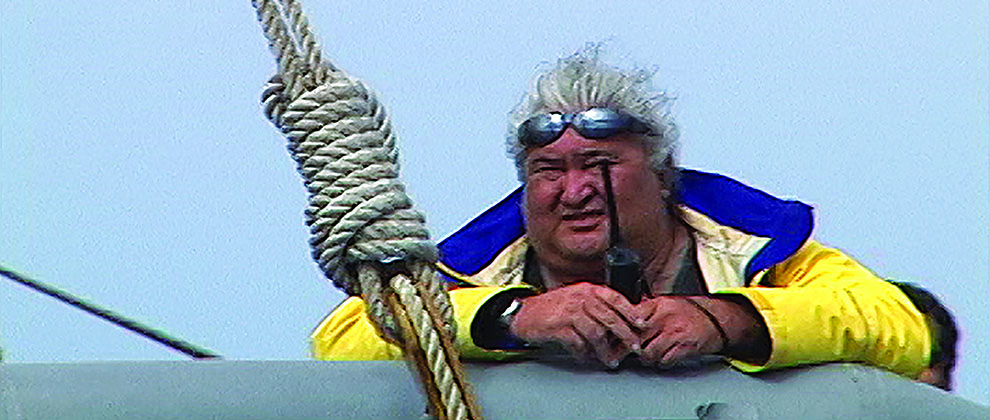
wa‘a ‘ohana.
Clay was a giant of a man, tough and gruff on the outside with a heart of gold on the inside. Students really responded to his firm hand and warm heart.
Through the years we sailed and filmed together, Clay taught me many things that changed my life forever. He taught me that we are all equal and that all are welcome aboard the wa‘a. And he taught me that we are one with all things, to respect everything as family, to love each other, and to mālama (take care of) the earth.
Clay was an ethnic mix of Hawaiian, German, and Native American. He said to me, “Keith, don’t let anyone tell you that you don’t belong here in Hawai‘i. We all came from someplace else at one time or another and to be Hawaiian, the only thing that matters to me is what is in your heart, not the percentage of your koko (blood).”
Clay left this world and transitioned before the film was completed, although he and I continued our spirited relationship during the editing for many months to follow, where he was right there with me, keeping me on the path towards his vision. When the film was finally complete, I looked at him and he just nodded with a positive look on his rugged face—as if to say “not bad.”
I’m happy to say that Clay was also with me during the writing of this story—and still a kolohe (rascal) spirit—kept distracting me looking for the purple bag.
Na Kalai Wa‘a program still shows the film The Magic of Makali‘i, keeping Clay’s memory and vision alive for the keiki and ‘ohana wa‘a of tomorrow. ❖
To learn more about the Makali‘i: NaKalaiWaa.org
Contact writer Keith Nealy: KeithNealy.com
Kūpuna Talk Story ©2014 Keith Nealy Productions
